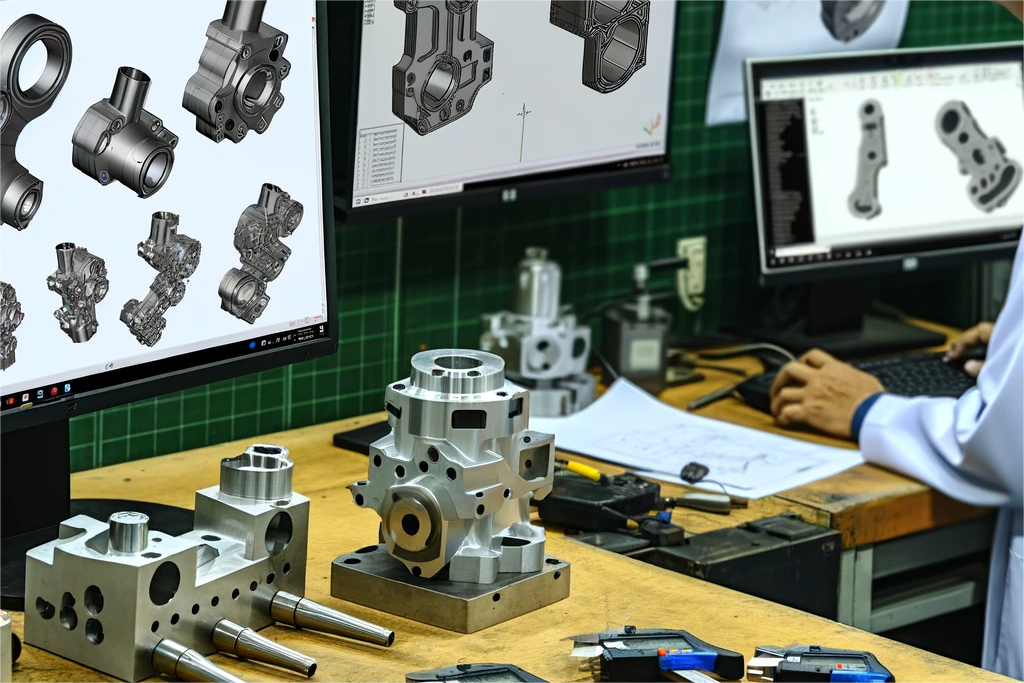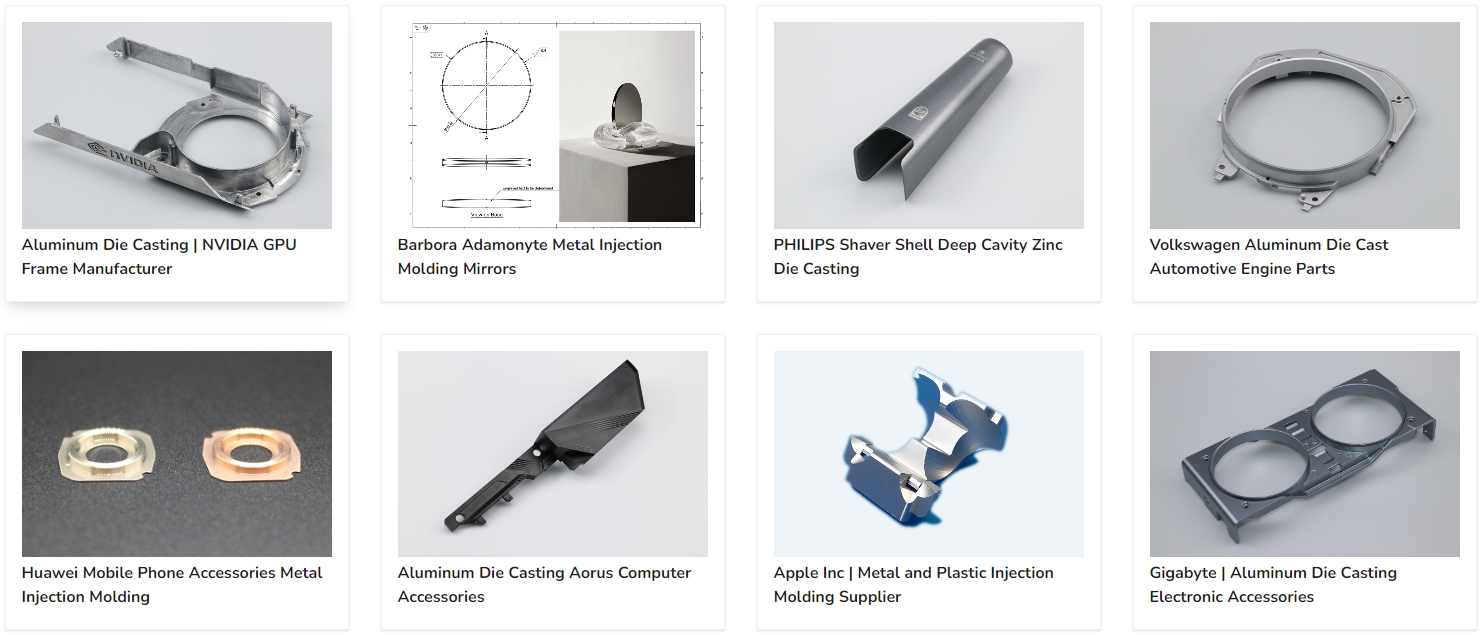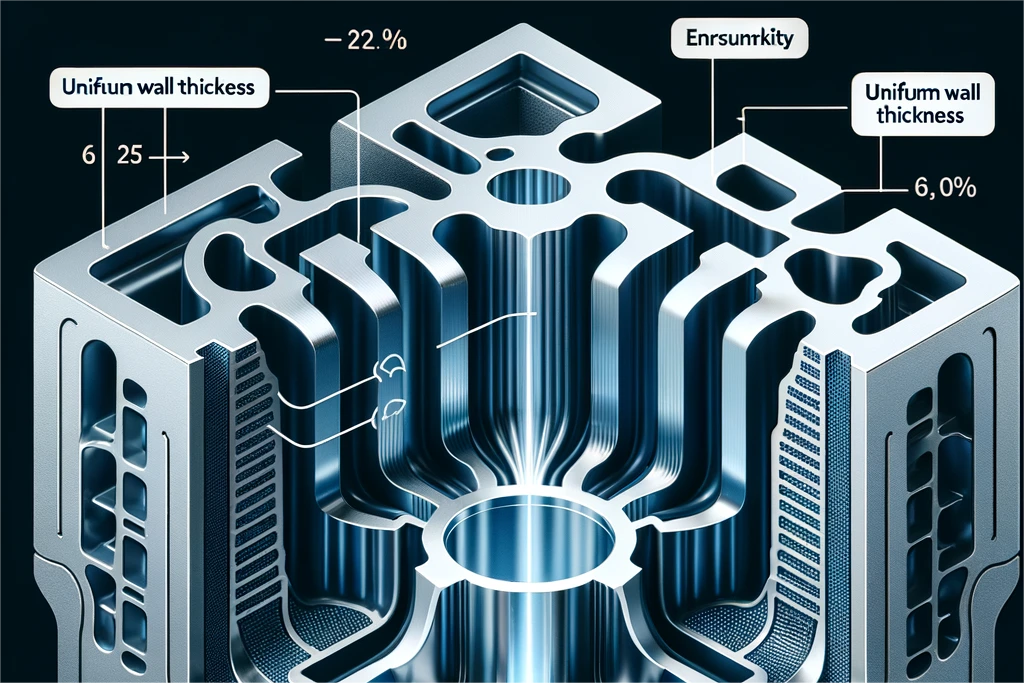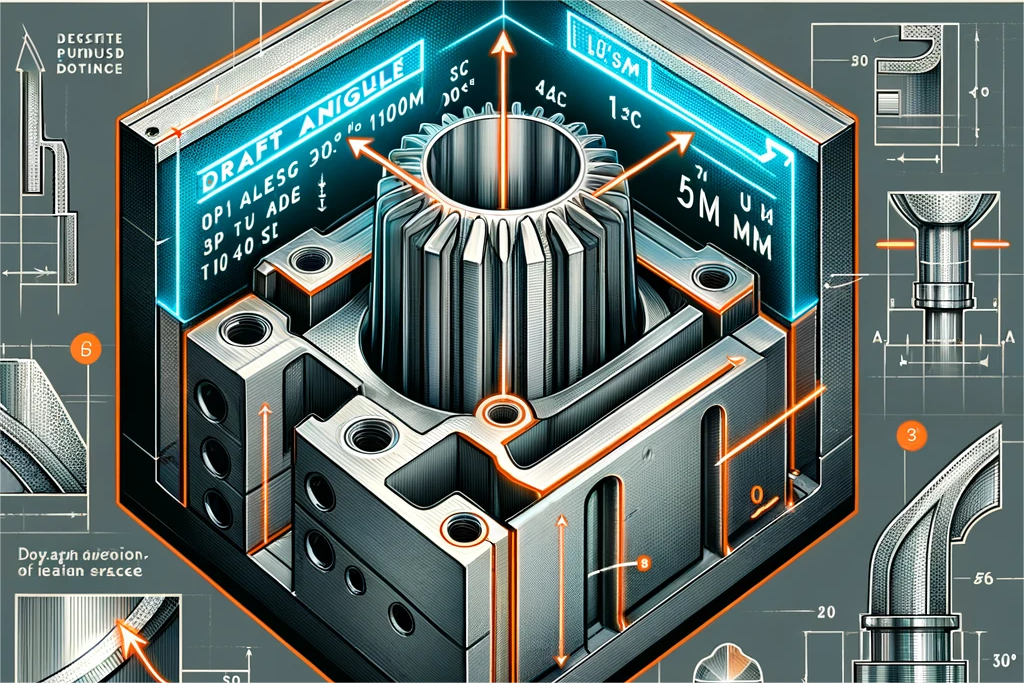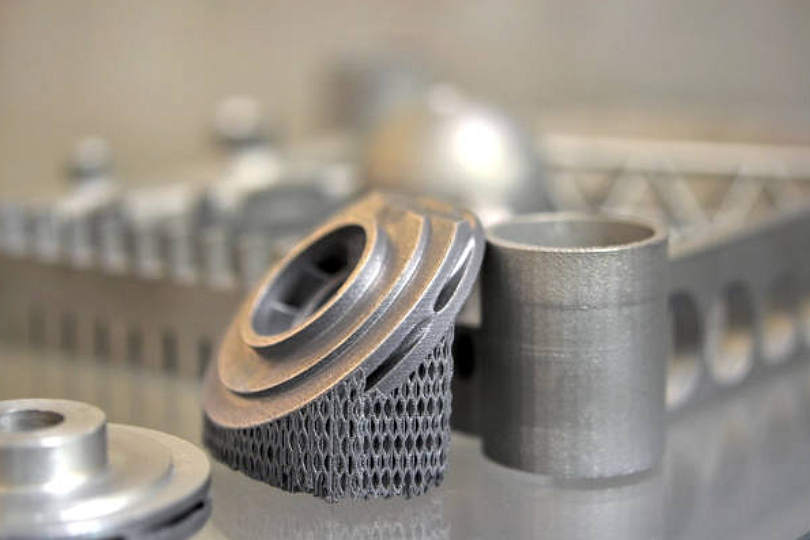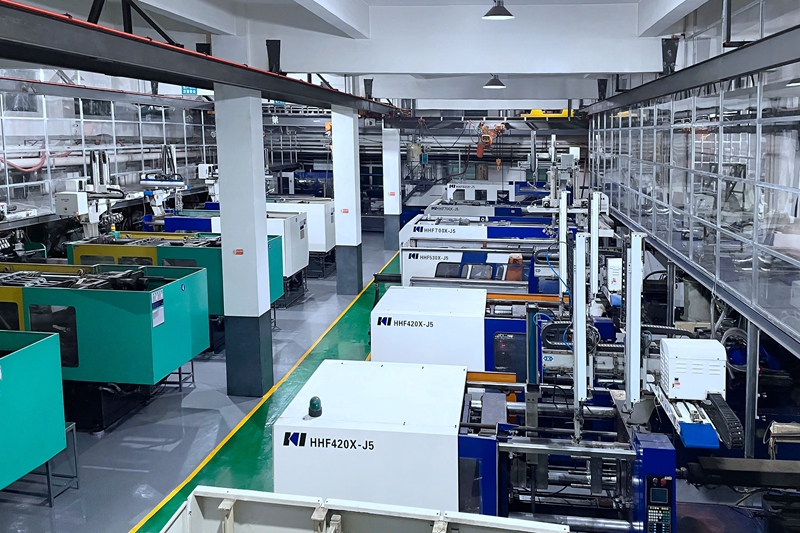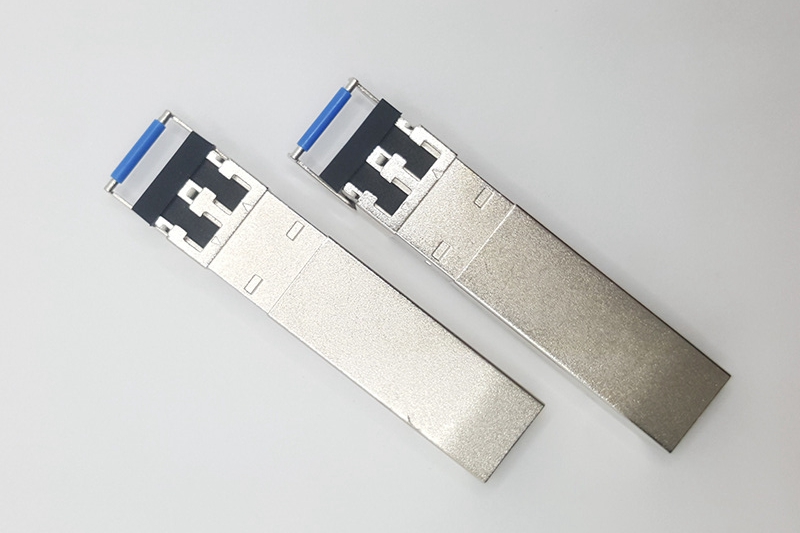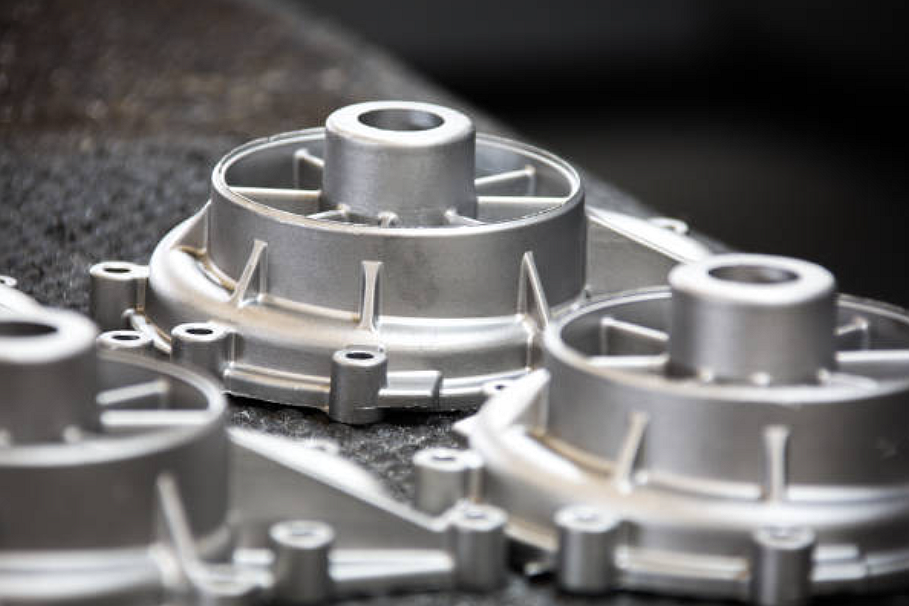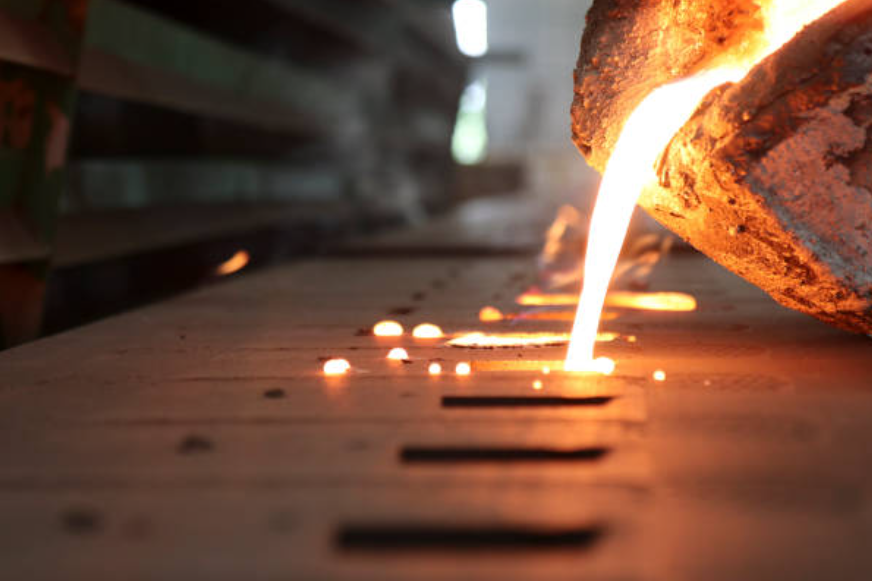Aluminum Die Casting Expert Design Advice | Tips for Manufacturing Better Die Castings
Importance of Design In The Aluminum Die Casting
In manufacturing, aluminum die casting is a remarkably efficient and versatile process for producing high-quality parts. This method creates complex shapes with high accuracy and repeatability by injecting molten aluminum under high pressure into a steel mold or die. The inherent properties of aluminum, such as its lightweight, strength, and corrosion resistance, make it an ideal choice for various applications, from automotive components to consumer electronics.
However, the die-casting process's success hinges significantly on the part's design. A well-thought-out design ensures the integrity and functionality of the final product and plays a crucial role in minimizing manufacturing challenges, reducing costs, and streamlining production processes. Recognizing the critical intersection between design and die-casting efficiency, this guide equips designers, engineers, and manufacturers with valuable insights and practical tips for producing better aluminum parts.
Through this Aluminum Die Casting Design Guide, we will delve into the nuances of the die-casting process, highlighting key design considerations that can make or break the success of a part. From selecting the appropriate aluminum alloy to understanding the intricacies of part design and tolerances, this guide provides a comprehensive overview that will help readers navigate the complexities of aluminum die casting. Whether you're new to the field or looking to refine your existing knowledge, our goal is to offer a resource that will empower you to optimize your designs for quality, efficiency, and cost-effectiveness in aluminum die casting.
Understanding Aluminum Die Casting
Aluminum die casting is a precision manufacturing process where molten aluminum is forced under high pressure into a steel mold, known as a die. This method is favored for producing complex shapes with high dimensional accuracy and smooth surface finishes. However, the benefits of aluminum die casting extend beyond precision, encompassing the unique advantages that aluminum as a material brings to the table.
The Die Casting Process
The process begins with melting aluminum alloy, which is then injected into the die cavity at pressures ranging from 1,500 to 25,000 pounds per square inch. This high-pressure injection ensures that the molten aluminum fills the die cavity, capturing the intricate details and geometry of the design. After the aluminum solidifies, the die is opened to eject the casting. The speed and efficiency of this process make it ideal for high-volume production runs.
Advantages of Using Aluminum
Aluminum is known for its lightweight yet strong properties, making it an excellent choice for applications where weight reduction is critical without compromising strength. It also exhibits excellent thermal conductivity, corrosion resistance, and electrical conductivity, making it versatile for various industries, including automotive, aerospace, electronics, and consumer goods. Additionally, aluminum's ability to withstand high temperatures and its environmental friendliness, being easily recyclable, further add to its appeal in die casting.
Common Applications of Aluminum Die Cast Parts
The aluminum's unique properties and the die-casting process's advantages make it suitable for various applications. In the automotive industry, aluminum die-cast parts are used for engine housings, gearbox cases, and structural parts. Consumer electronics benefit from the creation of enclosures, heat sinks, and frames. Other typical applications include sports equipment, medical devices, and furniture components, demonstrating the versatility and wide-reaching implications of aluminum die casting in modern manufacturing.
Design Considerations for Aluminum Die Casting
Creating high-quality aluminum die-cast parts requires careful consideration of various design considerations. From material selection to the nuances of part design, these factors play a critical role in the final part's performance, aesthetics, and manufacturability. This section explores the critical design considerations that can significantly impact the success of aluminum die-casting projects.
Material Selection
Types of Aluminum Alloys and Their Properties
Aluminum alloys for die casting are categorized by their material compositions, each offering distinct properties that cater to specific application needs. For instance, A380 is a widely used alloy due to its exceptional fluidity, pressure tightness, and resistance to hot cracking, making it suitable for a broad range of products. Other alloys, like A360, offer higher strength and corrosion resistance at the expense of a slightly lower casting fluidity. Suitable aluminum alloy involves balancing mechanical properties, casting characteristics, and cost.
How to Choose the Right Aluminum Alloy for Your Part
The appropriate aluminum alloy depends on the part's intended application, required mechanical properties, and specific manufacturing or environmental considerations. For example, if high thermal conductivity is crucial, an alloy like A383, known for its excellent thermal properties, might be preferred. Manufacturers should also consider factors like alloy availability, cost, and recycling requirements when selecting the material for their die-casting projects.
Key Design Elements in Aluminum Die Casting
Designing for aluminum die casting involves deeply understanding how each design element can affect the final product's manufacturability, strength, and aesthetic. Here, we dive into the specifics of key design elements such as wall thickness, draft angles, fillets, and parting lines, offering a more nuanced view of optimizing these features for superior die-cast parts.
Wall Thickness
Uniformity: Achieving uniform wall thickness is paramount in die-casting design to prevent defects such as shrinkage porosity and ensure uniform cooling and solidification. Uniform thickness facilitates the even flow of molten aluminum, contributing to the part's structural integrity.
Minimum and Maximum Thickness: While thin walls are desired for material and weight efficiency, there's a lower limit to how thin a wall can be, typically around 0.8mm for aluminum die casting, depending on the alloy and part complexity. Maximum wall thickness should be controlled to avoid prolonged cooling and increased porosity.
Design Strategies: Gradual transitions between thick and thin sections can help manage material flow and cooling rates. Core outs (removing unnecessary material from thicker sections) can maintain strength while achieving a lighter, more cost-effective part.
Draft Angles
Importance: Draft angles are crucial for the easy ejection of the part from the die, preventing damage to the part of the die. They also contribute to the quality of the surface finish.
Recommended Angles: The required draft angle can vary depending on the depth of the part and the surface finish, but a general rule is to include at least 1° of the draft for surfaces up to 50mm in length, with the need for greater angles as surface length increases.
Application: Including draft angles in the initial design phase avoids costly modifications to the die or part redesign later on. Consistency in applying draft angles across all features that parallel the direction of the die draw ensures manufacturability.
Fillets and Radii
Functionality: Fillets and radii eliminate sharp corners, reducing stress concentrations that can lead to cracking and failure. They also enhance the flow of molten metal during casting, contributing to the overall quality and strength of the part.
Design Tips: The radius of internal fillets should be at least one-third of the wall thickness, while external fillet radii can be smaller due to less risk of shrinkage porosity. Strategic placement of fillets can significantly improve part durability.
Parting Lines
Definition: The parting line is where the two halves of the die meet. Its placement is critical for both the aesthetic and functionality of the part.
Strategic Placement: Parting lines should be positioned to minimize impact on the part's appearance and to avoid areas with tight dimensional tolerances. Ideally, they are located along natural breaks or contours in part to camouflage their presence.
Considerations for Functionality: Beyond aesthetics, parting line placement can affect the ease of die casting and part removal. Strategic placement can reduce the need for secondary operations, like trimming and machining, thus lowering production costs.
Tips for Optimizing Design to Reduce Defects and Enhance Strength
Design parts with self-supporting structures to avoid the need for additional supports or cores.
Use ribs and gussets to increase part strength without significantly adding to the weight or wall thickness.
Consider the flow of molten aluminum and gate locations to ensure complete cavity fill and minimize air entrapment.
Tolerances and Precision
Standard Tolerances in Aluminum Die Casting
Die casting can achieve tighter tolerances than many other manufacturing processes, but it's crucial to understand the standard tolerances achievable with aluminum die casting. These tolerances depend on the part's dimensions, the specific aluminum alloy used, and the complexity of the part design. It's essential to specify tolerances as tight as necessary to fulfill the part's function and avoid unnecessary cost increases.
Basic Dimension Range (mm) | Standard Tolerance (± mm) |
|---|---|
0 to 10 | 0.02 |
10 to 18 | 0.03 |
18 to 30 | 0.04 |
30 to 50 | 0.05 |
50 to 80 | 0.07 |
80 to 120 | 0.08 |
120 to 180 | 0.12 |
180 to 250 | 0.2 |
Designing for Precision: Strategies to Achieve High Tolerance Levels
Collaborate with the die caster early in the design process to understand the capabilities and limitations of their process.
Utilize simulation software to predict and address potential material flow, solidification, and cooling issues.
Design features such as bosses, ribs, and walls with manufacturing and machining in mind, ensuring that critical dimensions can be achieved reliably and efficiently.
Reducing Costs and Improving Efficiency
Achieving cost-effectiveness while maintaining high quality in aluminum die casting requires strategic planning and optimization at every stage of the design and manufacturing process. Here, we explore practical ways to reduce costs and improve efficiency without compromising the integrity and performance of aluminum die-cast parts.
Design Modifications for Lower Production Costs
Simplify Part Designs: Complex designs require more intricate dies, which can increase both the initial die cost and the cycle time per part. Simplifying part geometries, where feasible, can lead to significant cost savings by reducing die complexity and manufacturing time.
Consolidate Multiple Parts into a Single Casting: Whenever possible, integrate multiple components into a single die-cast part. It reduces assembly operations and hardware and decreases the overall part count, lowering production and inventory costs.
Optimize for Material Usage: Design parts to use the minimum amount of Material required for strength and functionality. Techniques like core outs and strategic hollow sections can reduce material costs and cycle times while maintaining part integrity.
Leveraging Design for Easier Machining and Finishing
Consider Secondary Operations During Design: Plan for machining, finishing, and assembly processes in the initial design phase. Design features facilitating these operations can significantly reduce secondary processing costs and time.
Use Standard Components and Features: Incorporate standard die components and features into the design whenever possible. This approach can lower die costs and lead times, as custom components are more expensive and time-consuming.
Design for Efficient Cooling and Ejection: Features that improve die cooling and facilitate easier ejection of the part from the die can reduce cycle times and improve the overall efficiency of the casting process.
Rapid Prototyping and Its Benefits
Utilize Rapid Prototyping for Design Validation: Before committing to expensive die construction, use rapid prototyping methods such as 3D printing and CNC machining to create physical models of your parts. It can help identify design issues early on, allowing for adjustments before full-scale production begins.
Test Functionality and Assembly with Prototypes: Rapid prototypes can also verify part functionality and assembly interactions, reducing the risk of costly design errors and the need for late-stage modifications.
Considerations for Rapid Prototyping
Choose Appropriate Prototyping Methods: Select prototyping techniques that closely mimic the properties and manufacturing process of the final part. It ensures that the prototypes provide accurate feedback for design validation.
Analyze Prototype Feedback Thoroughly: Use the insights gained from prototyping to refine the design for manufacturability, functionality, and cost-effectiveness. Iterative design improvements based on prototype testing can lead to more efficient production processes and higher-quality final products.
Common Defects and How to Avoid Them
Aluminum die casting, while efficient and versatile, can sometimes result in defects that affect the finished parts' quality, functionality, and aesthetics. Understanding these common defects and implementing strategies to avoid them is crucial for maintaining high production standards. This section outlines several prevalent defects in aluminum die casting and guides how to prevent them.
Porosity
Description: Porosity refers to tiny holes or voids within the cast part caused by trapped gas or shrinkage during solidification.
Prevention:
Design parts with uniform wall thickness to promote even cooling and solidification.
Use proper venting and gating in the mold design to allow gases to escape.
Control the quality of the molten aluminum, ensuring it is free from contaminants that can trap gas.
Shrinkage Porosity
Description: Similar to porosity, shrinkage porosity occurs when parts of the casting cool and solidify faster than others, leading to voids.
Prevention:
Implement mold temperature control to ensure gradual and uniform cooling.
Design the casting with the proper gating system to facilitate directional solidification, moving from the thickest to the thinnest sections.
Cold Shuts
Description: Cold shuts happen when two fronts of molten aluminum fail to merge correctly, resulting in a weak seam.
Prevention:
Increase the temperature of the molten aluminum or mold temperature to prevent premature solidification.
Adjust the injection speed to ensure the molten metal fills the mold before cooling.
Misruns
Description: Misruns occur when the molten aluminum does not fill the mold cavity, leading to incomplete parts.
Prevention:
Optimize the mold design and placement of gates to ensure smooth and complete filling.
Modify the molten aluminum's temperature and the injection pressure to improve flow properties.
Flash
Description: Flash is excess material that seeps out of the mold cavity and solidifies at the parting line or around ejector pins.
Prevention:
Ensure precise mold alignment and maintain the mold to prevent wear and degradation.
Adjust clamping force to ensure the mold halves are securely closed during casting.
Addressing and Preventing Defects
In addition to specific strategies for each type of defect, a comprehensive approach to quality control and process optimization can further reduce the occurrence of defects. It includes:
Simulation Software: Casting simulation software can help predict and mitigate potential defects before production begins.
Quality Control Protocols: Establishing stringent quality control measures, including inspection and testing at various production stages, helps identify and address defects early.
Continuous Improvement: Implementing a culture of continuous improvement, where feedback from each production run is analyzed and used to refine processes, can lead to lasting reductions in defect rates.
By proactively addressing these common defects, manufacturers can enhance the reliability and quality of their aluminum die-casting operations, leading to better products and higher customer satisfaction.
What We Can Do In Aluminum Die Casting?
In the intricate world of aluminum die casting, the journey from concept to finished part is paved with critical design decisions. This guide has traversed the essential terrain of material selection, part design, tolerances, cost reduction strategies, defect prevention, and the pivotal role of rapid prototyping. The key to producing superior aluminum die-cast parts is a deep understanding of these areas, ensuring designs are feasible and optimized for efficiency, durability, and cost-effectiveness.
Are you ready to elevate your aluminum die-casting projects? Whether you're fine-tuning existing designs or embarking on new ventures, the principles detailed in this guide serve as your roadmap to success. For those seeking further refinement or facing complex challenges, professional consultation can unlock new levels of quality and efficiency in your die-casting operations.
Reach out to Neway, who can provide tailored advice, from selecting the perfect aluminum alloy to optimizing your design for unparalleled performance. Dive deeper into resources that expand on the topics covered and connect with a community of professionals dedicated to the art and science of aluminum die casting. Your journey toward producing better aluminum parts, marked by innovation and excellence, continues with each step forward. Embrace the challenge, and let's create the future of manufacturing together.
